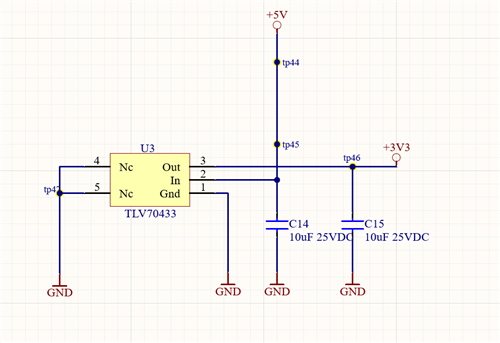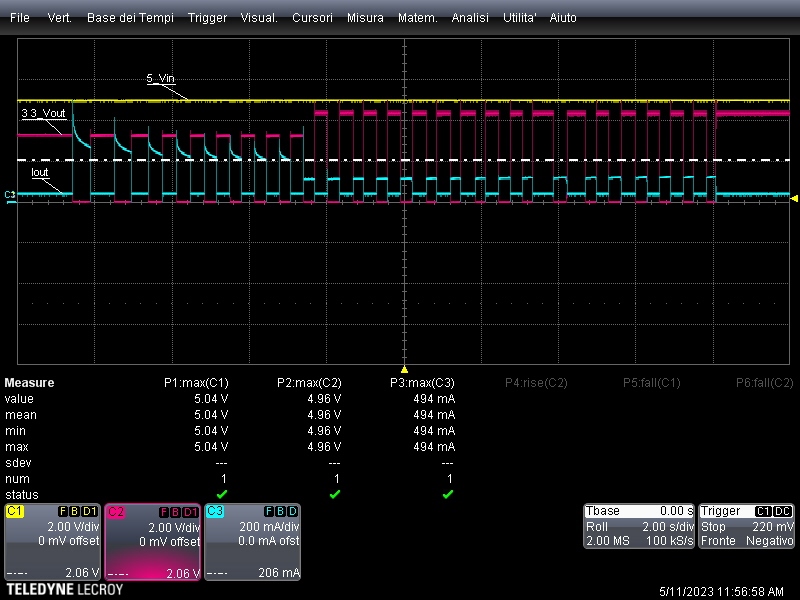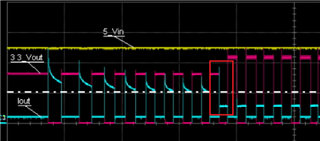Good morning,
We are testing TLV70433DBVR in our board, using the scheme below:
Input voltage = 5V
Output Voltage = 3.3V
Nominal output current = 40mA

We have seen that this p/n doesnt' work properly in case of repetitive output load shorts. We have captured a screenshot of this behaviour:
Yellow: 5V input voltage
Red: 3.3V output voltage
Blue: output current

After some repetitive load shorts, ouptut voltage is not regulated and rise up till 4.96Vdc. After a component reset, it restarts to work properly. Only with higher nominal output current, this part number can be damaged with repetitive load shorts.
Is it a known behaviour? Is this p/n auto-protected from repetitive shorts or it is necessary to insert in our scheme an external protection?
Thank you






